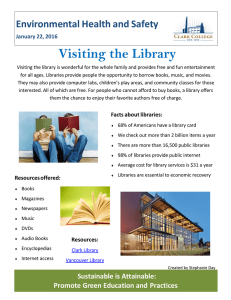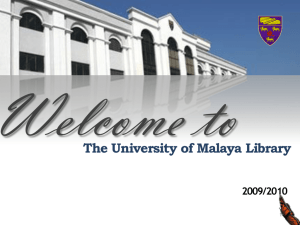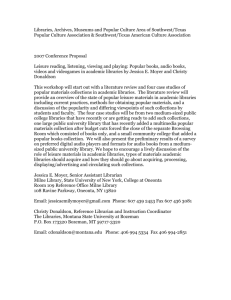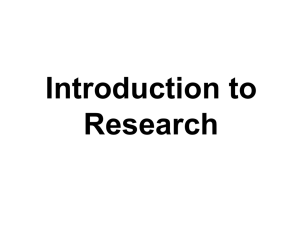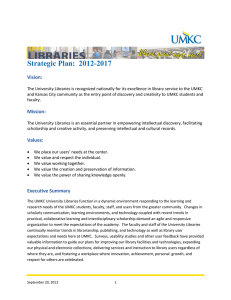New Service Models
advertisement
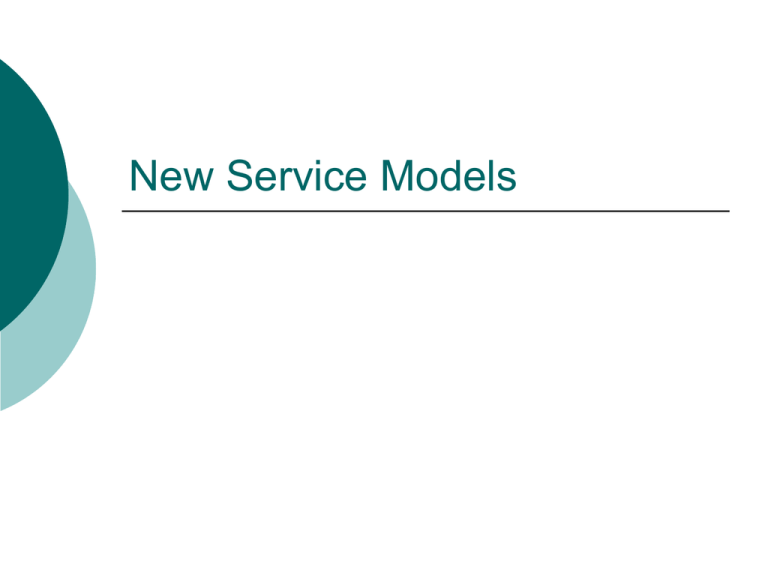
New Service Models Why? Simply put: we can’t do all you tell us you want and need Service and collection models that defined excellence in academic libraries throughout the 20th century are not sustainable if we want to make improvements in service (reduce cataloging backlogs) or offer new services or content modes or anything else Influencing Factors Increasing demands for new things Insufficient funding Our inability to reallocate resources aggressively enough Continue to buy/license new content while unable to catalog what we already own Continuing complaints about having to visit too many libraries Influencing Factors New models of scholarly communication New mechanisms for licensing and accessing digital content Introduction of transformative technologies such as the World Wide Web and digital content New methods for teaching and learning New approaches to interdisciplinary scholarship and scientific inquiry New generation of faculty and students, "digital natives," who bring new approaches to information use (and higher expectations for access to digital services and content) Library/IT Fee Funds do not come directly to Library Provost guided by student Tuition Policy Advisory Committee We submit list of high priority items Funded hours extension; new teaching site in Main Library; Learning Commons in UGL Approach Look at new ways to deliver content and services to do more and do it better Embrace new service models that recognize the increasingly interdisciplinary nature of academic inquiry, the critical importance of digital information resources, and the opportunities for collaborative approaches to the provision of library services and collections using information technology. Process Call for ideas and proposals – received about 70 Input and feedback from Library and campus faculty and staff Used input to reduce number to 24 Currently getting input on these ideas Will use input to identify few ideas that seem sensible and can be implemented in next 1-3 years Actions Underway During process several ideas received widespread endorsement Teams being formed to develop implementation plans and get them underway Decision Principles Enhance user services Facilitate regular communication and collaboration among faculty, students, librarians, library staff, and members of the public. Responsible stewardship of content in all forms must incorporate a life-cycle approach to all programs and services. This includes thoughtful selection and acquisition, provision of access, preservation, and active curation, particularly in the case of special collections. Principles Outcomes must be both measurable and predictable New service models will focus primarily on the creation of “hubs” that provide coordination and access to human expertise and content across disciplinary clusters, including both print and digital resources from the Library system. While physical space may play some role in these changes, digital information resources and new service delivery models will play a primary role in the development of these models. Debunking Myths Subject specialists will not diminish in importance – their importance will increase and you’ll see them in libraries and your buildings Collection funds will not go away We will continue to collect content in all formats, including print Physical space will continue to be important and must be improved in many locations Closing some libraries will not diminish service, although it will change the way service is delivered Time to listen Questions? Comments?

